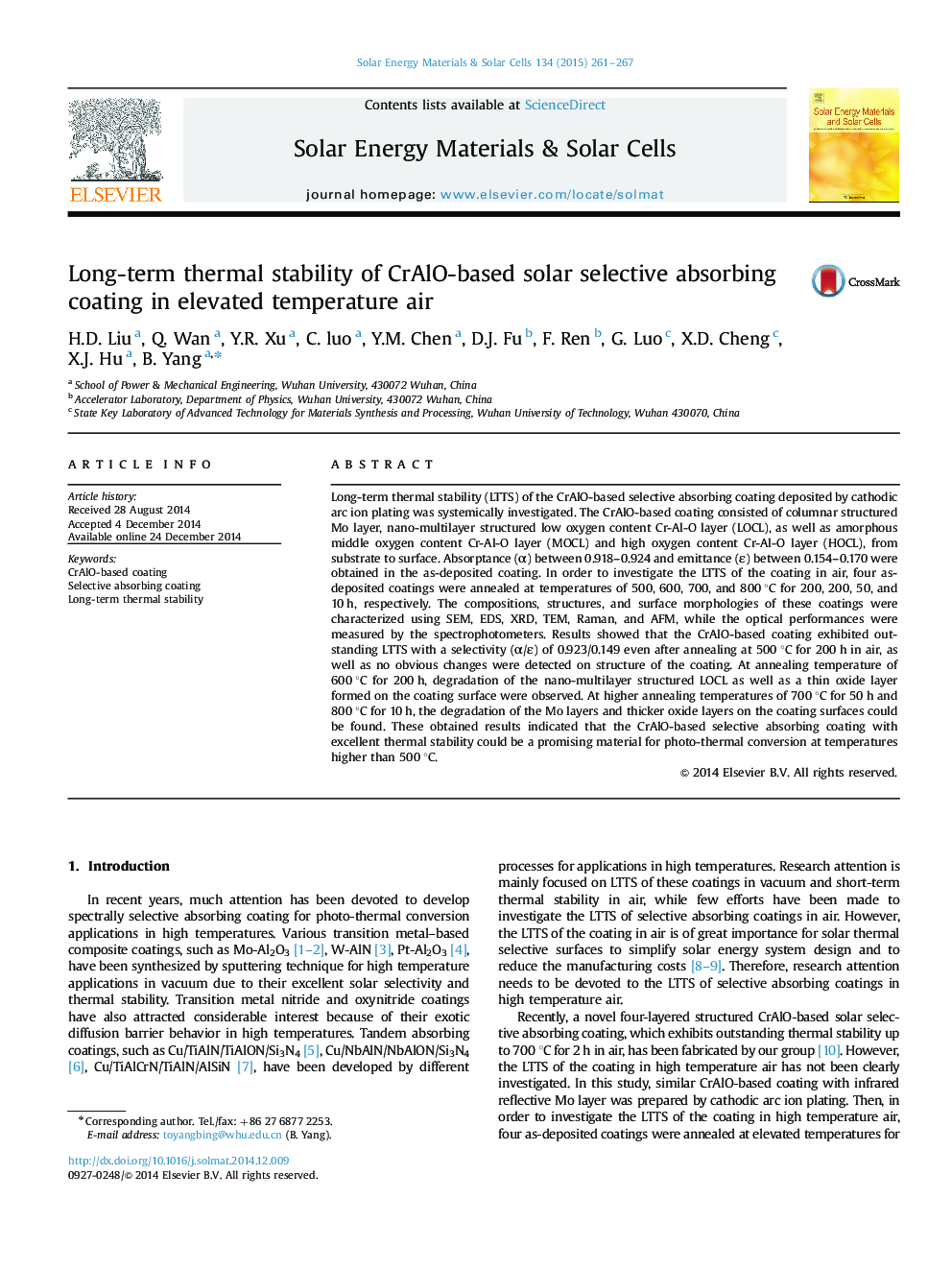| Article ID | Journal | Published Year | Pages | File Type |
|---|---|---|---|---|
| 77916 | Solar Energy Materials and Solar Cells | 2015 | 7 Pages |
•Long-term thermal stability of CrAlO-based coating was investigated at 500–800 °C.•The coating exhibited outstanding thermal stability annealing at 500 °C for 200 h in air.•Degradation of the coating caused by diffusion and oxidation was observed at temperatures higher than 600 °C.
Long-term thermal stability (LTTS) of the CrAlO-based selective absorbing coating deposited by cathodic arc ion plating was systemically investigated. The CrAlO-based coating consisted of columnar structured Mo layer, nano-multilayer structured low oxygen content Cr-Al-O layer (LOCL), as well as amorphous middle oxygen content Cr-Al-O layer (MOCL) and high oxygen content Cr-Al-O layer (HOCL), from substrate to surface. Absorptance (α) between 0.918–0.924 and emittance (ε) between 0.154–0.170 were obtained in the as-deposited coating. In order to investigate the LTTS of the coating in air, four as-deposited coatings were annealed at temperatures of 500, 600, 700, and 800 °C for 200, 200, 50, and 10 h, respectively. The compositions, structures, and surface morphologies of these coatings were characterized using SEM, EDS, XRD, TEM, Raman, and AFM, while the optical performances were measured by the spectrophotometers. Results showed that the CrAlO-based coating exhibited outstanding LTTS with a selectivity (α/ε) of 0.923/0.149 even after annealing at 500 °C for 200 h in air, as well as no obvious changes were detected on structure of the coating. At annealing temperature of 600 °C for 200 h, degradation of the nano-multilayer structured LOCL as well as a thin oxide layer formed on the coating surface were observed. At higher annealing temperatures of 700 °C for 50 h and 800 °C for 10 h, the degradation of the Mo layers and thicker oxide layers on the coating surfaces could be found. These obtained results indicated that the CrAlO-based selective absorbing coating with excellent thermal stability could be a promising material for photo-thermal conversion at temperatures higher than 500 °C.
